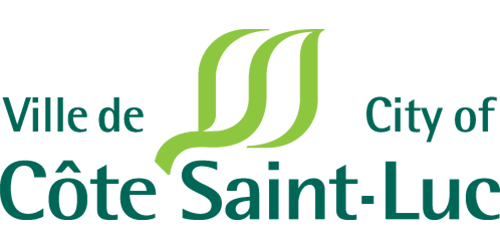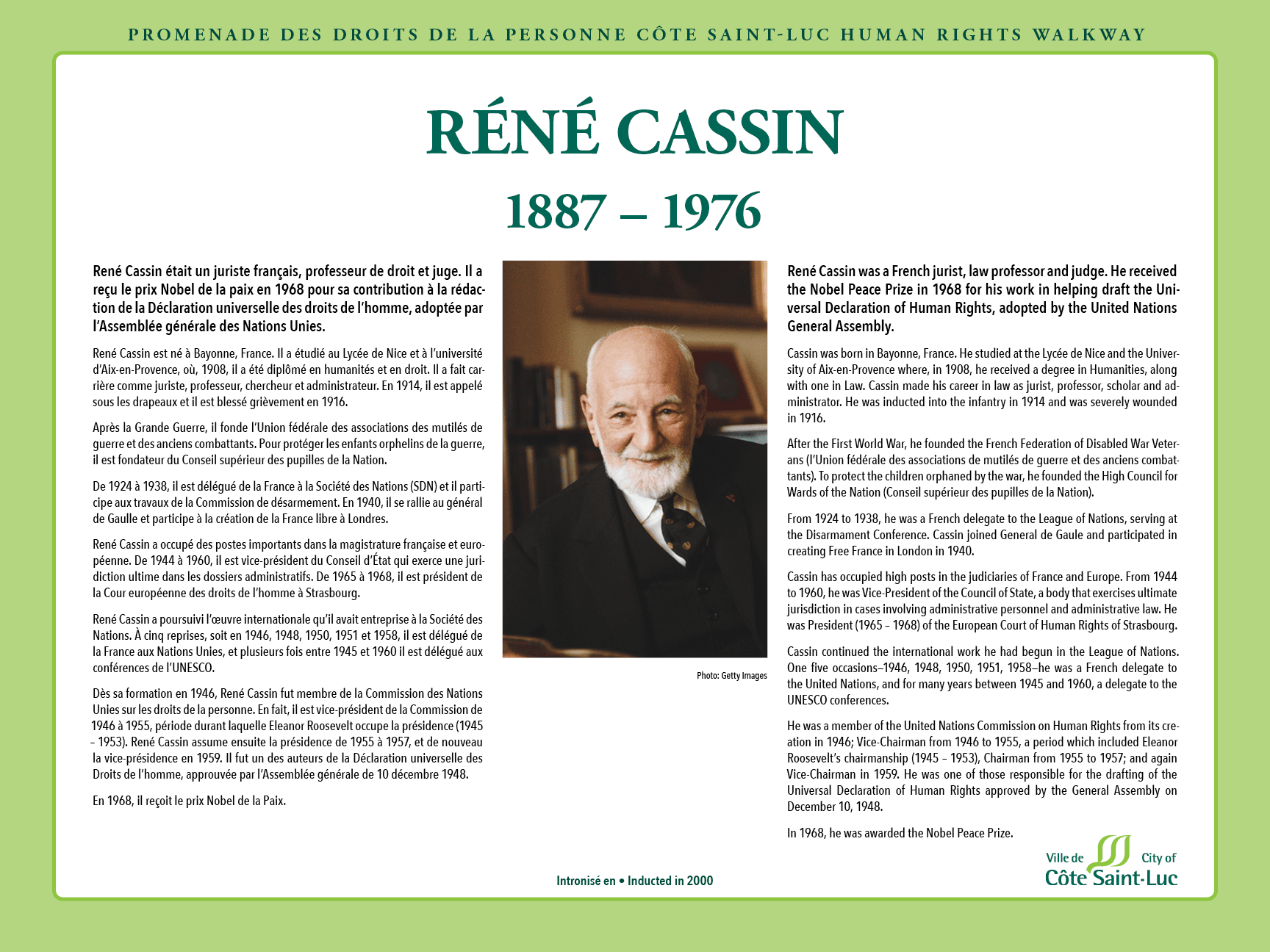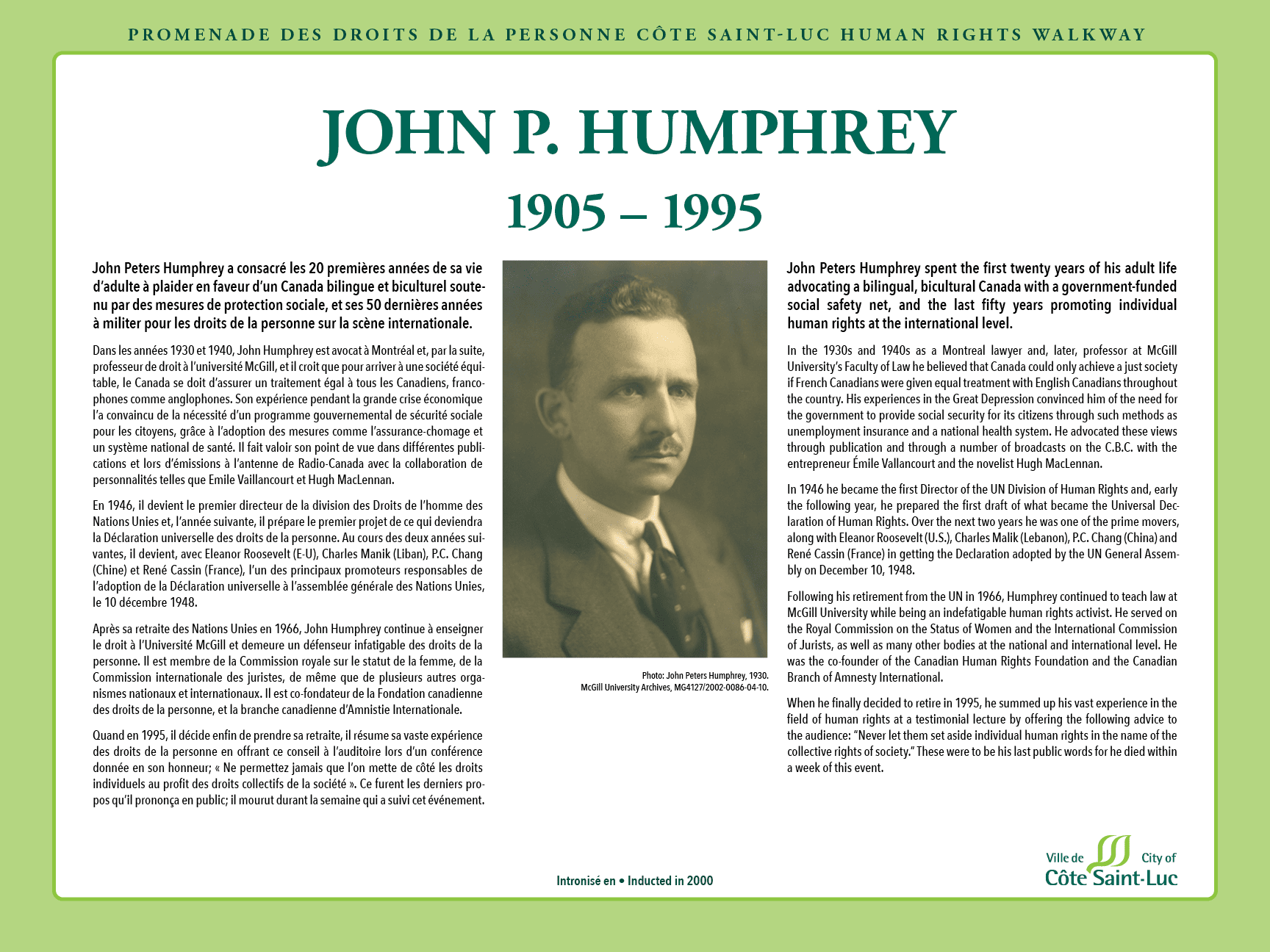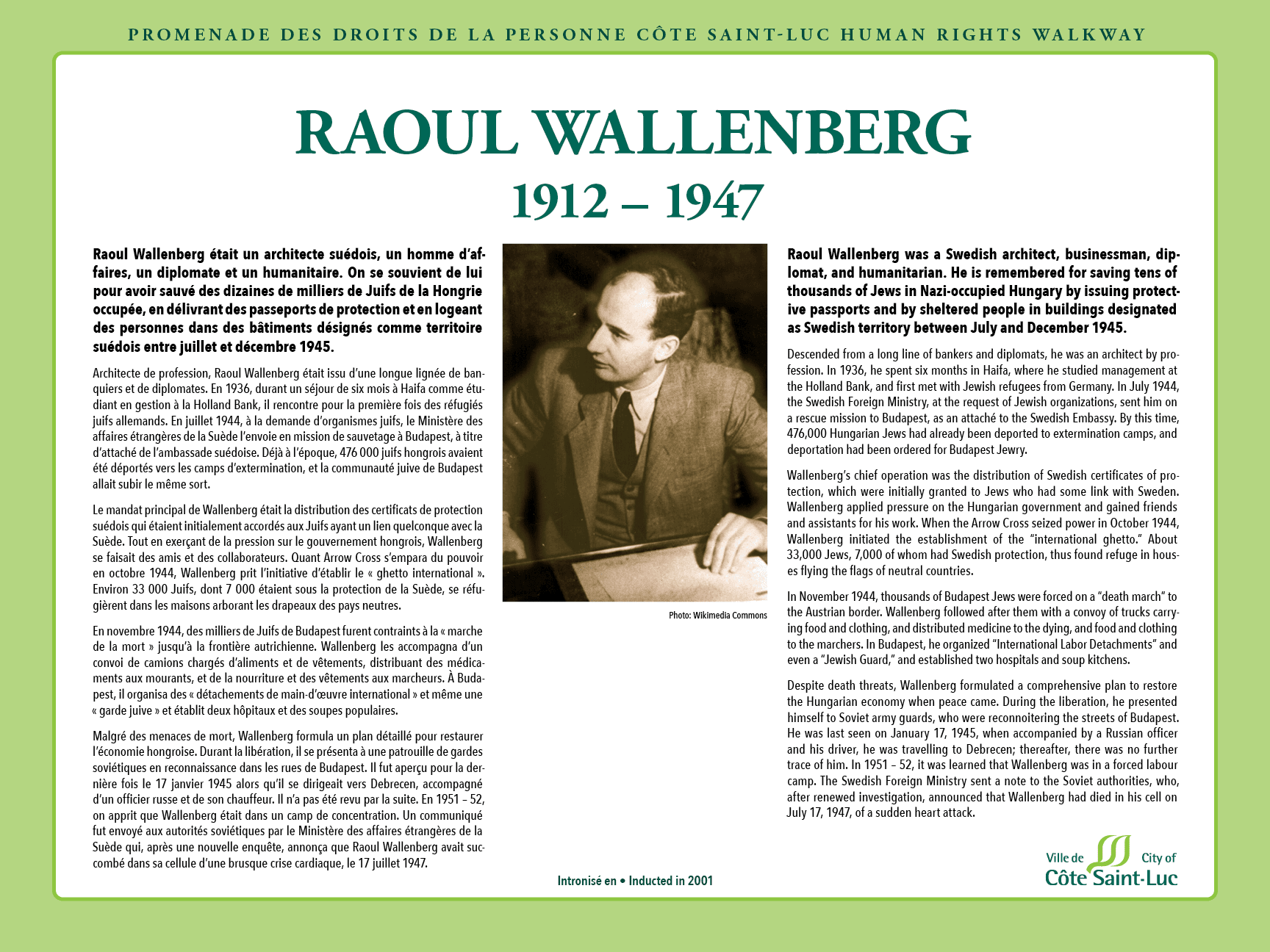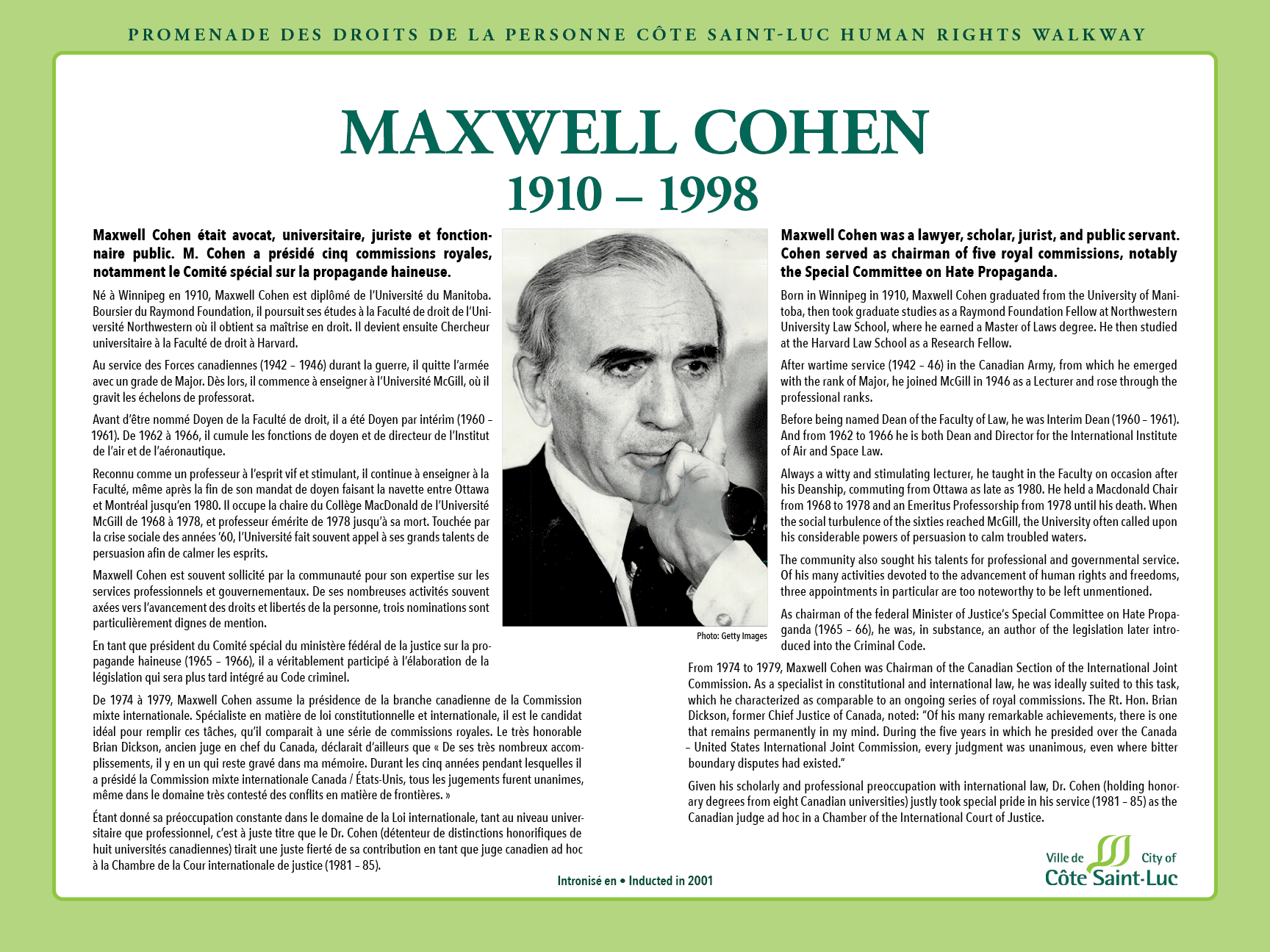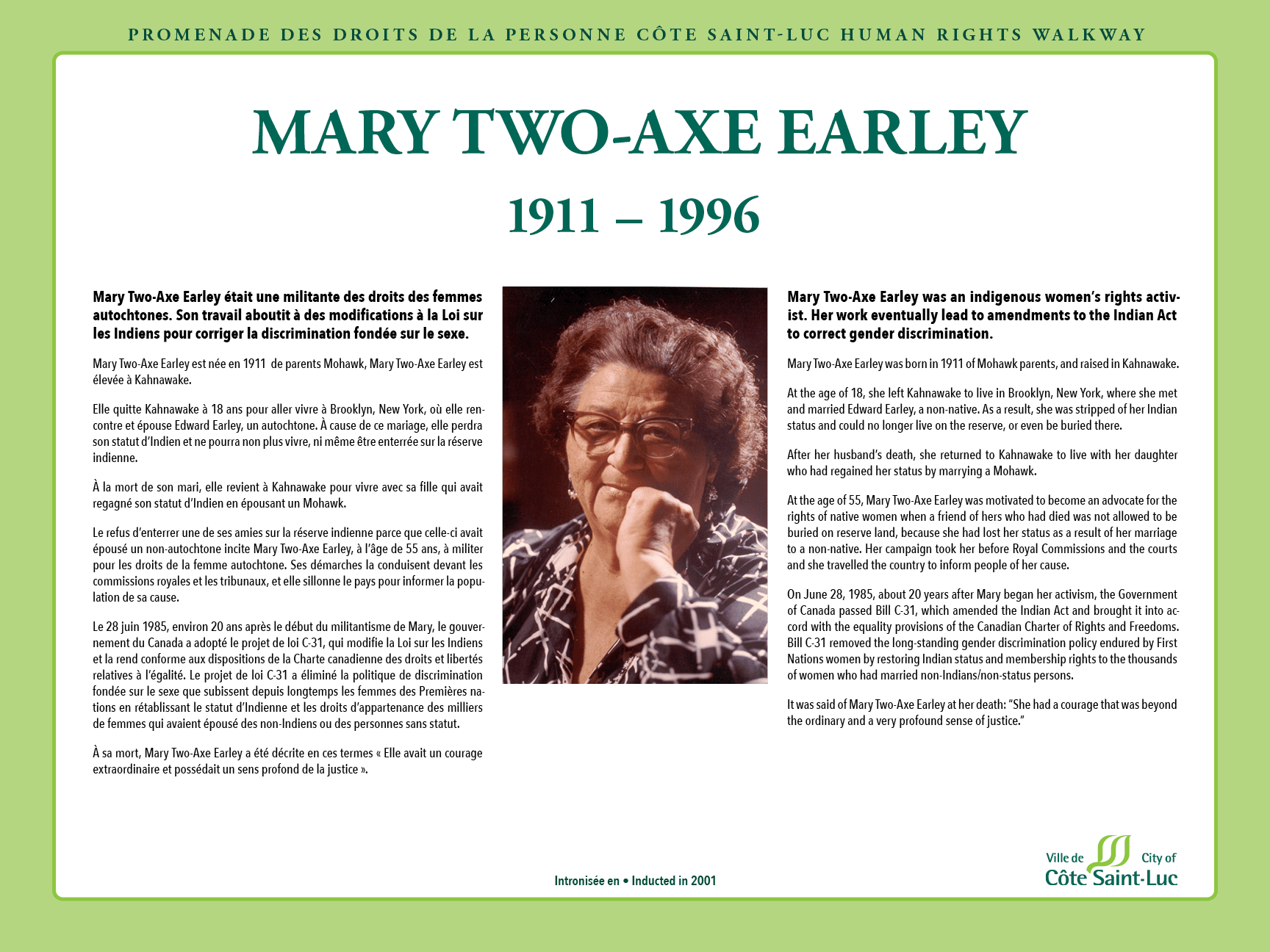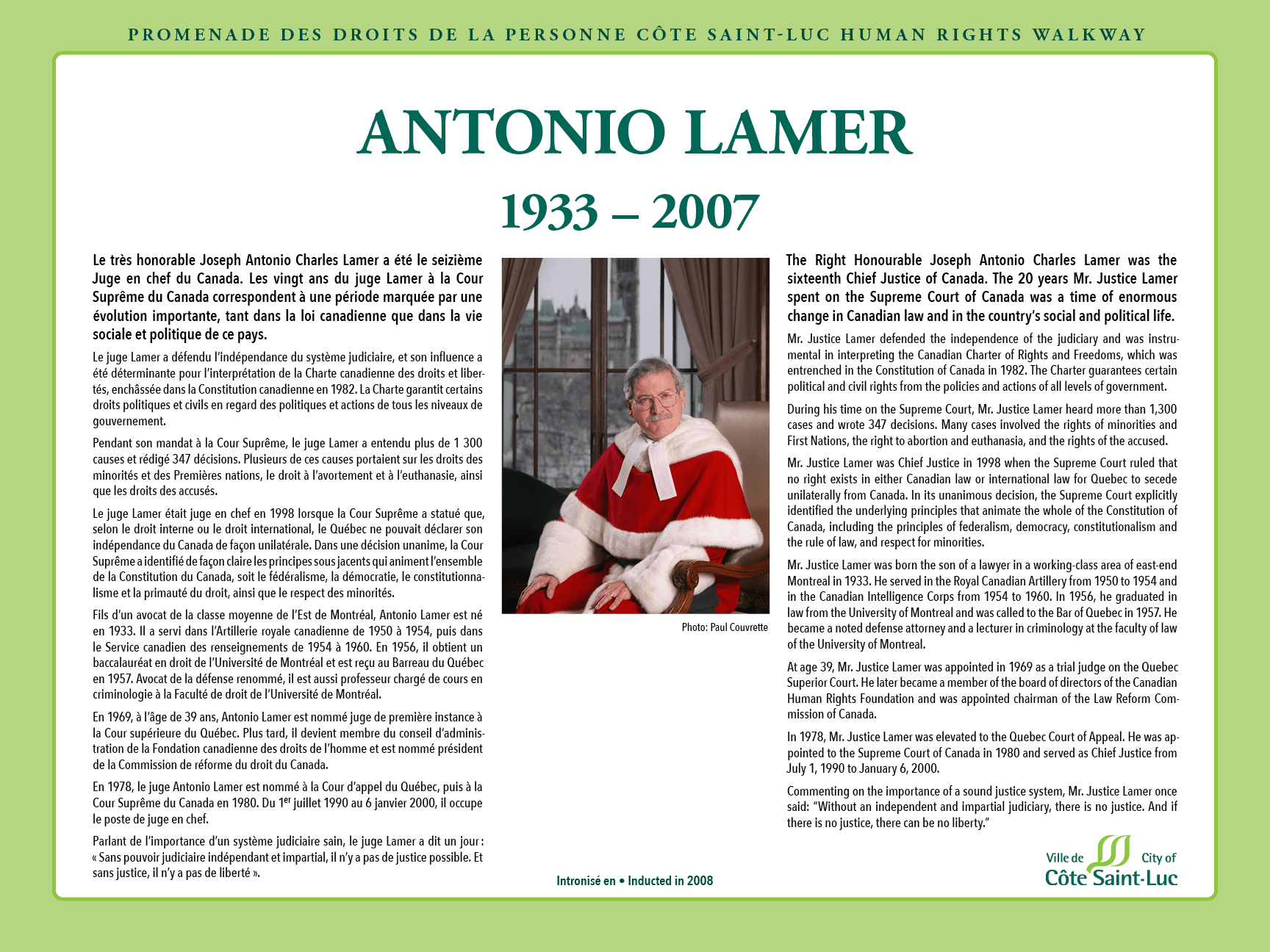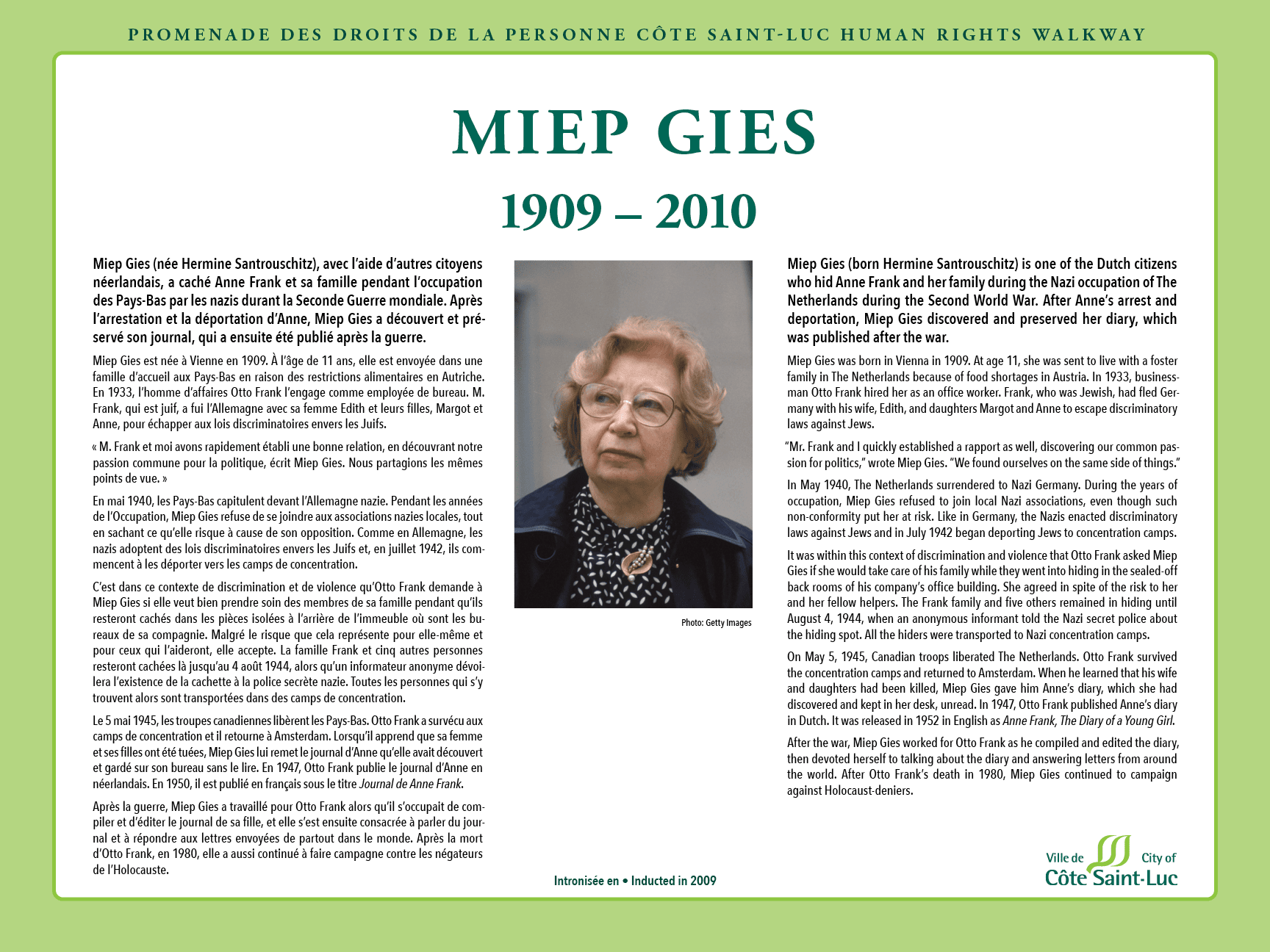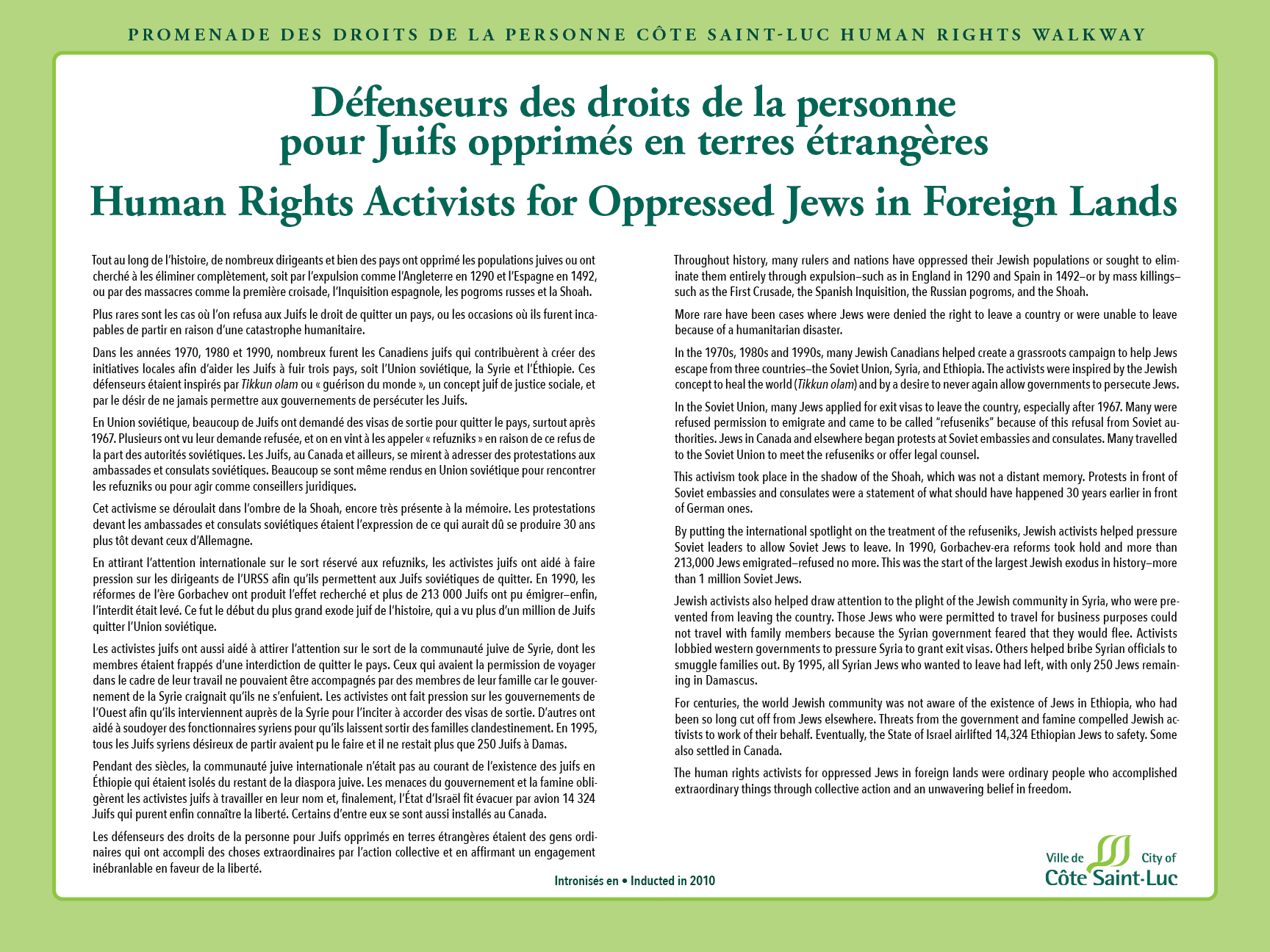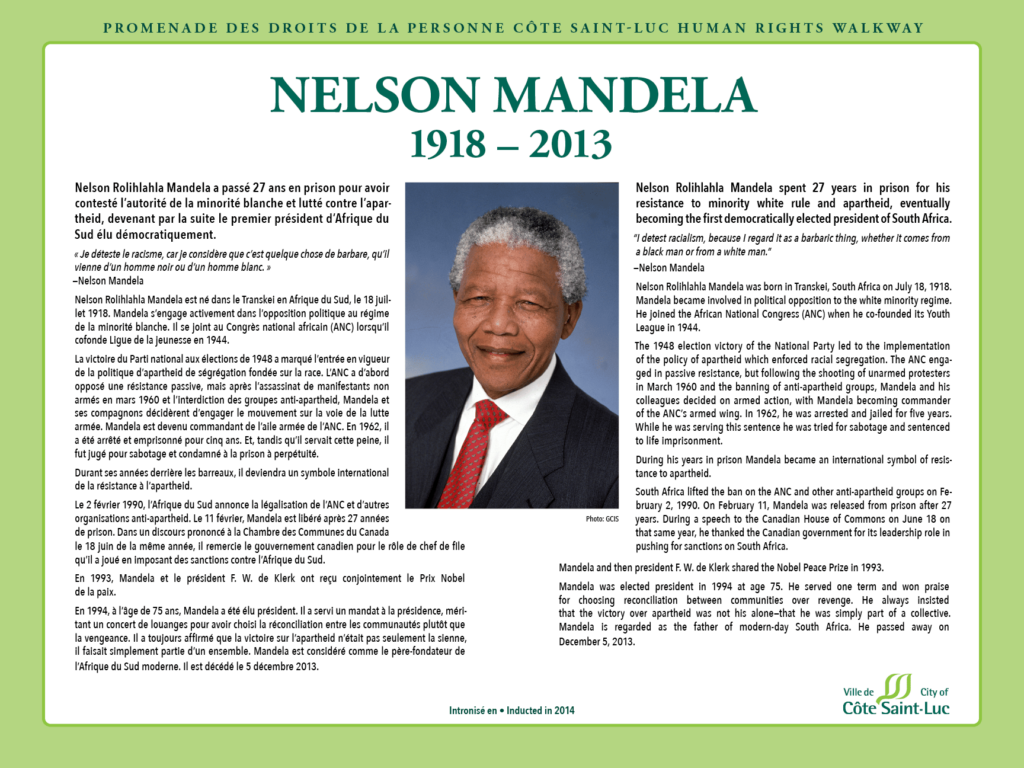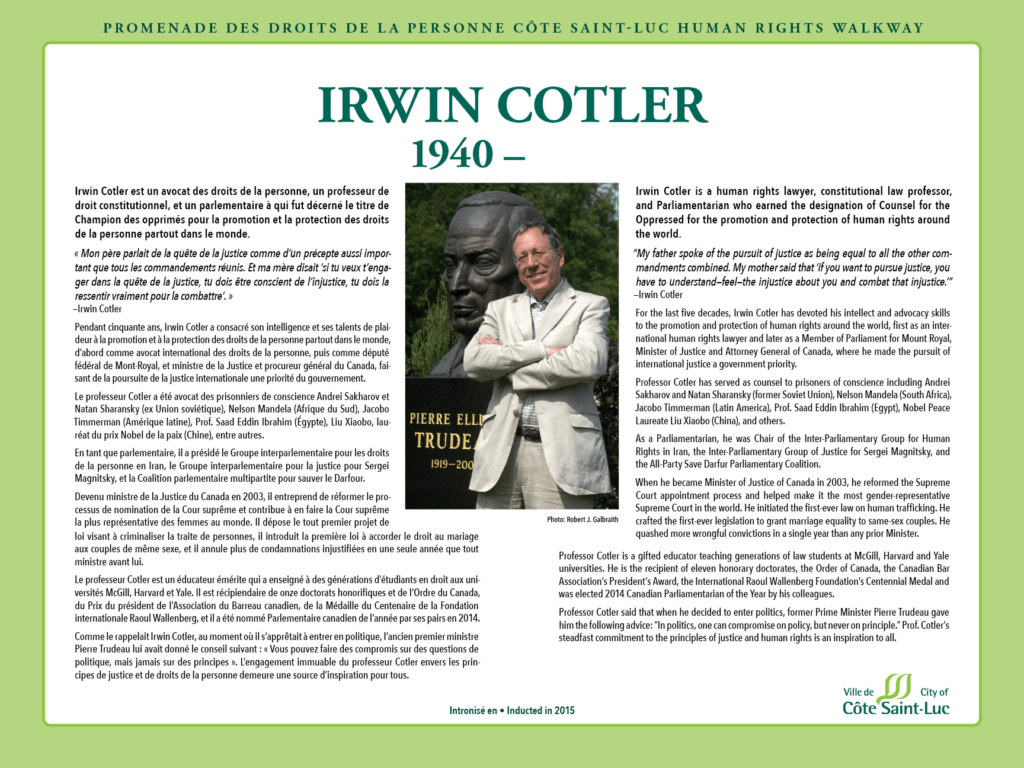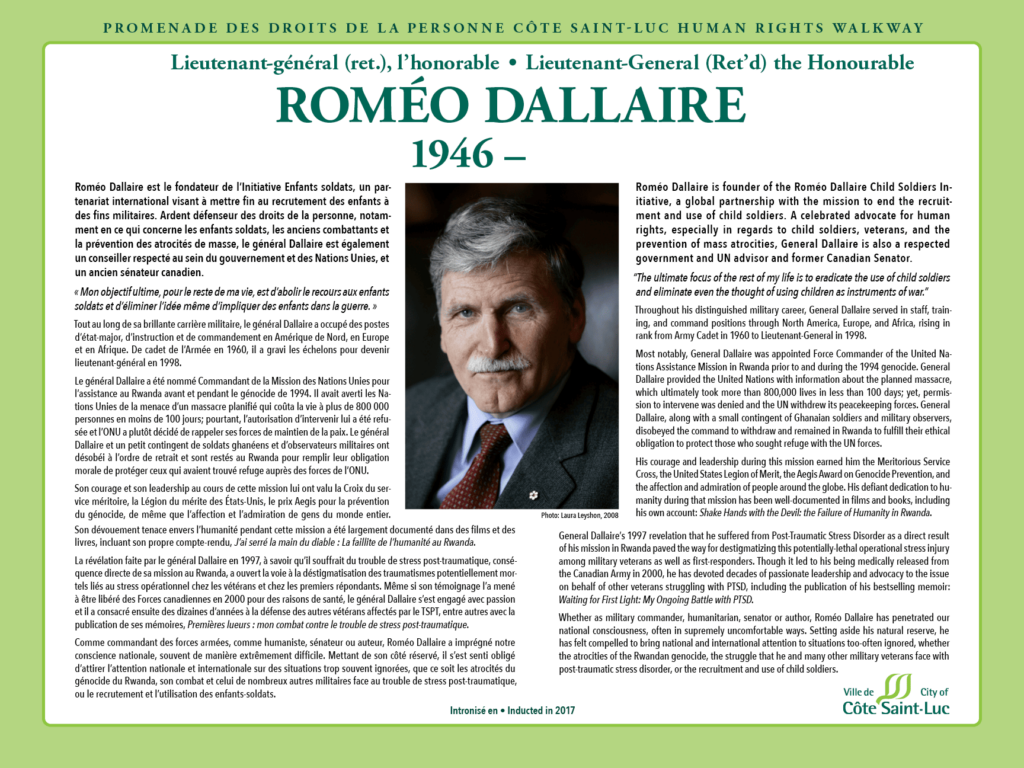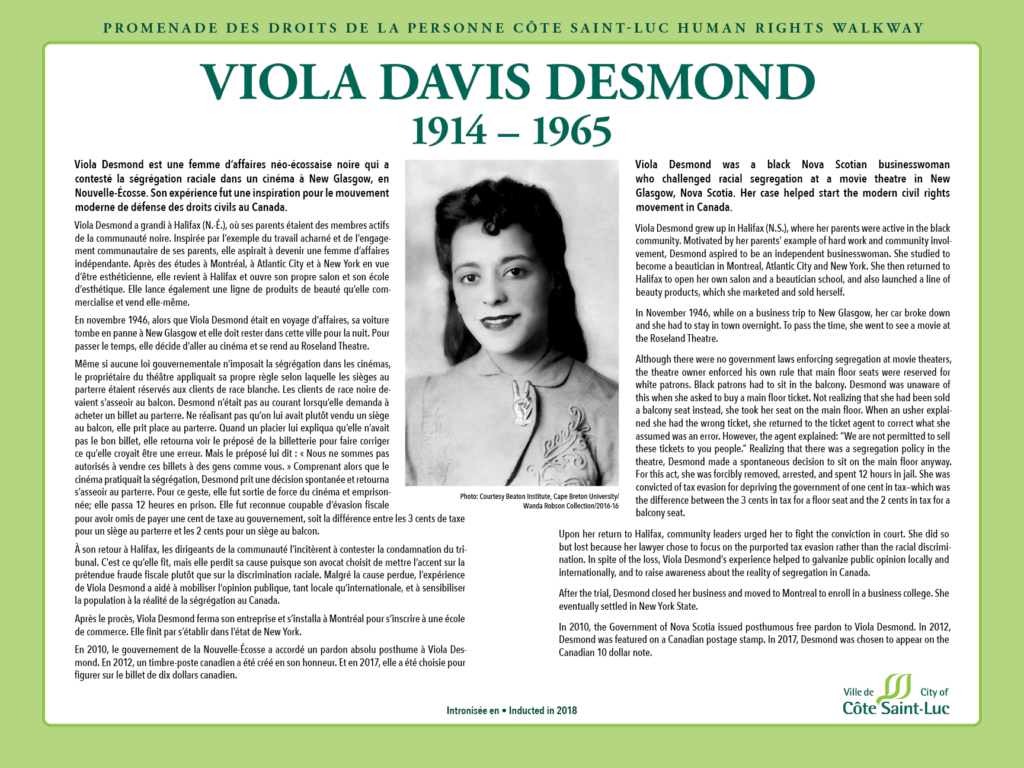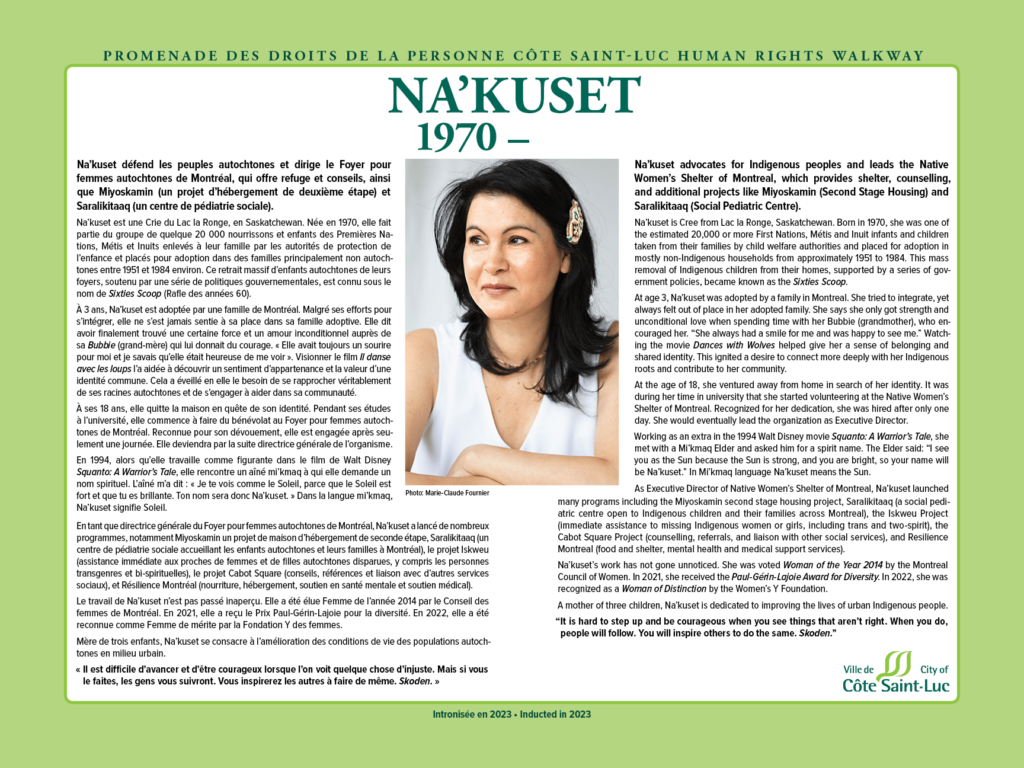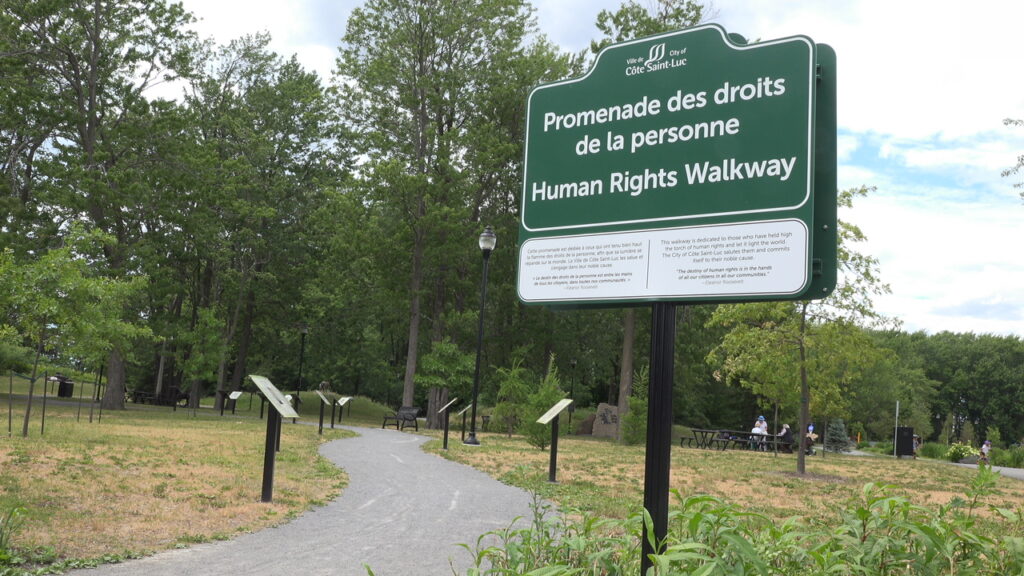
Inaugurated in September 2000 and located at Pierre Elliott Trudeau Park, the Côte Saint-Luc Human Rights Walkway is dedicated to those men and women who, by their steadfast commitment to humankind, have held high the torch of human rights and let it light the world. Those honoured on the Human Rights Walkway include the following people.
René Cassin (1887-1976)
A member of the United Nations Commission on Human Rights from its creation in 1946. He was one of those responsible for the drafting of the Universal Declaration of Human Rights. He was awarded the Nobel Peace Prize in 1968.
John P. Humphrey (1905-1995)
A lawyer and professor, he became the first director of the United Nations Division of Human Rights. He was one of the prime movers in getting the Declaration adopted by the UN General Assembly in 1948.
Raoul Wallenberg (1912-1947)
A Swedish diplomat dispatched to Hungary during the Second World War to facilitate the rescue of Jews from Nazi extermination. He succeeded in rescuing 100,000 Jews before mysteriously disappearing in 1945.
Jules Deschênes (1923-2000)
Chief Justice of the Quebec Court of Appeal in the 1970s. Among his numerous appointments on Canadian and UN committees, he chaired the Canadian Committee of Enquiry on War Criminals, known as the “Deschênes Commission,” which inaugurated the pursuit of war criminals worldwide.
Maxwell Cohen (1910-1998)
Dean of Law at McGill University in the 1960s. Among his several appointments on national and international bodies, he was Chairman of the federal Special Committee on Hate Propaganda, whose important work finds its legacy in Canada’s Criminal Code.
Mary Two-Axe Earley (1911-1996)
A Mohawk from the Kahnawake reserve. Her perseverance in lobbying the Canadian government resulted in amendments to the Indian Act in 1985, allowing native women married to non-natives to regain their Indian status.
Helen Suzman (1917-2009)
Helen Suzman was an anti-apartheid activist and politician in South Africa noted for her strong public criticism of the policies of apartheid at a time when this was unusual among whites. Accused by a minister of asking questions in parliament that embarrassed South Africa, Suzman replied: “It is not my questions that embarrass South Africa, it is your answers.” In 1996, she was at the side of President Nelson Mandela, when he signed the new South African constitution in 1996.
Watch the ceremony (Helen Suzman)
Antonio Lamer (1933-2007)
The Right Honourable Joseph Antonio Charles Lamer was the sixteenth Chief Justice of Canada. The 20 years Mr. Justice Lamer spent on the Supreme Court of Canada was a time of enormous change in Canadian law and in the country’s social and political life. Mr. Justice Lamer defended the independence of the judiciary and was instrumental in interpreting the Canadian Charter of Rights and Freedoms, which was entrenched in the Constitution of Canada in 1982. The Charter guarantees certain political and civil rights from the policies and actions of all levels of government. Commenting on the importance of a sound justice system, Mr. Justice Lamer once said: “Without an independent and impartial judiciary, there is no justice. And if there is no justice, there can be no liberty.”
Miep Gies (1909-2010)
Miep Gies (born Hermine Santrouschitz) is one of the Dutch citizens who hid Anne Frank and her family during the Nazi occupation of The Netherlands during the Second World War. After Anne’s arrest and deportation, Miep Gies discovered and preserved her diary, which was published after the war.
Human Rights Activists for Oppressed Jews in Foreign Lands
In the 1970s, 1980s and 1990s, many Jewish Canadians helped create a grassroots campaign to help Jews escape from three countries—the Soviet Union, Syria, and Ethiopia. The activists were inspired by the Jewish concept to heal the world (Tikkun olam) and by a desire to never again allow governments to persecute Jews.
Watch the ceremony (activists)
Jackie Robinson (1919-1972)
Jack Roosevelt Robinson was the first African American to play Major League Baseball in the modern era, ending the 50-year segregation of blacks and whites in the sport and helping usher in the civil rights movement in the United States.
Watch the video tribute to Jackie Robinson
Nelson Mandela (1918-2013)
Nelson Rolihlahla Mandela spent 27 years in prison for his resistance to minority white rule and apartheid, eventually becoming the first democratically elected president of South Africa.
Irwin Cotler (1940 – )
Irwin Cotler is a human rights lawyer, constitutional law professor and Parliamentarian who earned the designation of Counsel for the Oppressed for the promotion and protection of human rights around the world.
View video of the induction ceremony for Irwin Cotler
Roméo Dallaire (1946 – )
Le lieutenant-général (ret.) Roméo Dallaire est le fondateur de l’initiative Enfants soldats, un partenariat international visant à mettre fin au recrutement des enfants à des fins militaires. A celebrated advocate for human rights, especially in regards to child soldiers, veterans, and the prevention of mass atrocities, General Dallaire is also a respected government and UN advisor and former Canadian senator.
View the video honouring Lt General Roméo Dallaire (Ret’d)
Viola Davis Desmond (1914-1965)
Viola Desmond was a black Nova Scotian businesswoman who challenged racial segregation at a movie theatre in New Glasgow, Nova Scotia. Her case helped start the modern civil rights movement in Canada
Na’Kuset (1970-)
Na’kuset advocates for Indigenous peoples and leads the Native Women’s Shelter of Montreal, which provides shelter, counselling, and additional projects like Miyoskamin (Second Stage Housing) and Saralikitaaq (Social Pediatric Centre).
